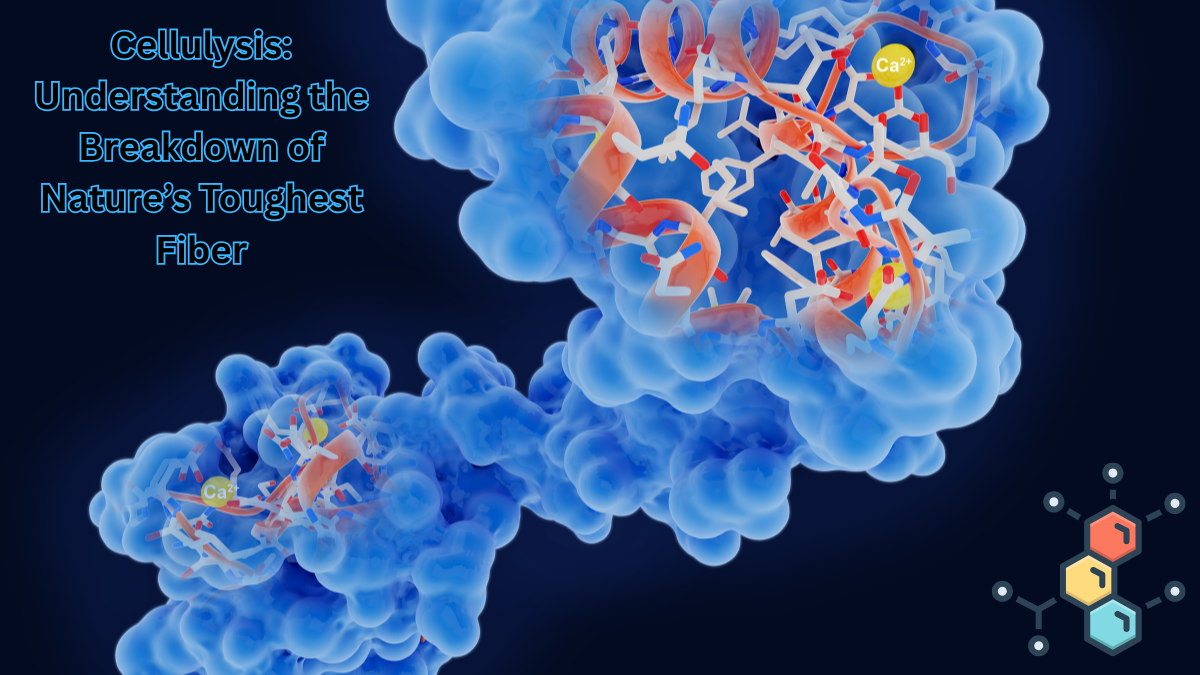In simple terms, cellulysis is the process of breaking down cellulose, the structural carbohydrate that forms the backbone of plant cell walls. This seemingly small biochemical reaction carries enormous importance. Without cellulysis, herbivores could not digest their food, soil microbes could not recycle plant matter, and humans could not explore sustainable ways to produce biofuels, textiles, or pharmaceuticals. In essence, cellulysis is at the heart of how life transforms organic matter into usable energy.
This article explores cellulysis from every angle—its biological mechanisms, industrial applications, challenges, and innovations—bringing together both foundational understanding and updated perspectives on where this process is headed.
What is Cellulysis?
Cellulysis’s refers to the enzymatic hydrolysis of cellulose into simpler sugars such as glucose. Cellulose is one of the most abundant natural polymers on Earth, yet it is highly resistant to degradation due to its crystalline structure and extensive hydrogen bonding. The process of cellulysis’s involves specialized enzymes called cellulases that act collectively to dismantle this rigid carbohydrate.
Cellulysis’s occurs naturally in ecosystems and digestive systems, but it can also be engineered in laboratories and industrial facilities. It is both a natural cycle of life and a frontier of biotechnology.
Why Cellulysis Matters
The importance of cellulysis spans across ecosystems and industries.
- Ecological recycling: Cellulysis allows dead plant matter to return nutrients to the soil, enabling the carbon cycle to continue.
- Animal digestion: Herbivores like cows and termites rely on symbiotic microbes to perform cellulysis’s so they can access plant energy.
- Biofuels: Cellulysis’s of agricultural waste can release sugars that are fermented into ethanol, providing renewable energy alternatives.
- Pharmaceuticals: Modified cellulase enzymes aid in drug delivery and certain medical treatments.
- Textiles and paper: Controlled cellulysis’s improves the softness of fabrics and facilitates paper pulping.
In short, cellulysis’s represents both survival in nature and opportunity in human innovation.
The Science Behind Cellulysis
Cellulysis’s depends on a consortium of enzymes working together. Cellulases can be divided into three broad categories:
- Endoglucanases: These attack the internal bonds of cellulose chains, creating new chain ends.
- Exoglucanases (cellobiohydrolases): These progressively remove cellobiose units from the chain ends.
- β-glucosidases: These break down cellobiose into glucose, the simplest usable sugar.
The synergistic action of these enzymes ensures complete degradation of cellulose, though the efficiency depends on substrate accessibility and enzyme availability.
Factors Affecting Cellulysis
- Crystallinity of cellulose: Highly crystalline cellulose resists enzymatic attack.
- Presence of lignin: Lignin, another plant polymer, often blocks cellulase access.
- Temperature and pH: Each cellulase operates best within specific ranges.
- Microbial diversity: In natural systems, diverse microbial communities accelerate cellulysis.
Natural Occurrence of Cell-ulysis
In Soil Ecosystems
Microbes in soil, particularly fungi and bacteria, constantly perform cellulysis’s to recycle plant litter. Without their activity, organic matter would accumulate without returning nutrients to the environment.
In Herbivore Digestive Systems
Ruminants like cows host complex microbial populations in their rumen that specialize in cellulysis’s. Similarly, termites carry gut protozoa and bacteria capable of breaking down wood cellulose.
In Marine Ecosystems
Marine fungi and bacteria contribute to cellulysis in coastal areas, where plant debris enters the ocean.
Industrial Applications of Cellulysis
Biofuel Production
Cellulysis’s is a cornerstone of producing second-generation biofuels. Agricultural waste such as corn stover, wheat straw, or sugarcane bagasse is pretreated, enzymatically hydrolyzed, and fermented into ethanol.
Food and Beverages
Cellulase enzymes are used in juice extraction, coffee bean processing, and improving dough handling.
Textile and Fashion
Cellulysis improves fabric softness, enhances denim stonewashing, and assists in eco-friendly textile processing.
Paper and Pulp Industry
Enzymatic cellulysis reduces energy needs in pulping, enhances fiber quality, and supports more sustainable production.
Medical Applications
Cellulases are being studied for their role in controlled drug release, wound cleaning, and even targeted cancer therapies.
Challenges in Harnessing Cellulysis
- High enzyme cost: Industrial cellulases remain expensive to produce.
- Slow reaction rates: Native cellulases often work too slowly on lignocellulosic biomass.
- Pretreatment needs: Plant matter usually requires costly pretreatments before enzymatic breakdown.
- Enzyme inhibition: Accumulated sugars can slow down enzyme action.
Innovations and Future Directions
Genetic Engineering
Engineered microbes now produce cellulases with enhanced efficiency and stability. Some synthetic biology projects aim to design microbes that directly ferment cellulose to ethanol without separate hydrolysis.
Pretreatment Advances
New methods, such as ionic liquid pretreatment or ammonia fiber explosion, are being developed to open up cellulose for faster breakdown.
Nanotechnology
Nanoparticle-assisted cellulases may improve enzyme stability and allow recyclability.
Circular Bioeconomy
Cellulysis fits into the vision of a circular economy by enabling renewable fuel production and sustainable waste management.
Comparative Table: Natural vs Industrial Cellulysis
| Aspect | Natural Cellulysis | Industrial Cellulysis |
|---|---|---|
| Primary Agents | Microbes (fungi, bacteria, protozoa) | Purified enzymes, engineered microbes |
| Environment | Soil, animal guts, marine habitats | Controlled bioreactors, fermentation tanks |
| Purpose | Nutrient cycling, digestion | Energy, textiles, food, pharmaceuticals |
| Rate | Gradual, ecosystem-dependent | Optimized but costly |
| Challenges | Environmental conditions | Enzyme cost, pretreatment, efficiency |
The Broader Impact of Cellulysis
Cellulysis is more than a chemical breakdown. It symbolizes how humanity can learn from nature’s solutions. By studying and improving this process, we address pressing global issues—energy security, climate change, food production, and medical innovation. The continued investment in cellulysis research offers a pathway to sustainable living without severing ties with the natural cycles that sustain all life.
Frequently Asked Questions (FAQs)
1. What is cellulysis in simple terms?
Cellulysis is the process of breaking down cellulose, the main plant fiber, into smaller sugars like glucose using enzymes.
2. Why is cellulysis important for humans?
It is crucial for biofuel production, sustainable textile manufacturing, food processing, and potential medical therapies.
3. Do humans produce cellulase enzymes?
No, humans do not naturally produce cellulase enzymes. We rely on microbes in foods or industrial processes.
4. Can cellulysis help fight climate change?
Yes, by converting agricultural waste into renewable fuels, cellulysis reduces reliance on fossil fuels and cuts carbon emissions.
5. What is the biggest challenge in industrial cellulysis?
The high cost of enzymes and the need for effective biomass pretreatment remain the most significant barriers.











